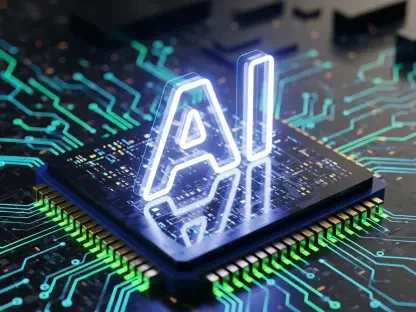As we dive into the evolving landscape of DevOps, I’m thrilled to sit down with Anand Naidu, our resident development expert. With a mastery of both frontend and backend technologies, Anand brings a wealth of knowledge on coding languages and a unique perspective on integrating artificial intelligence into enterprise DevOps. Today, we’ll explore the challenges of scaling DevOps practices, the transformative potential of AI across the software development lifecycle, and practical strategies for adopting these technologies effectively.
How do you see the biggest challenges in scaling DevOps practices at an enterprise level right now?
Scaling DevOps in an enterprise setting is no small feat. The sheer volume of applications, the diversity of teams, and the complexity of cloud environments create a perfect storm. Add to that the stringent compliance requirements, and you’ve got a situation where maintaining speed and governance feels almost impossible. In my experience, the real struggle is keeping velocity without sacrificing quality or morale—teams often get bogged down by manual processes and fragmented tools that just don’t scale well.
What impact have the growing number of applications and cloud complexities had on your team’s DevOps goals?
It’s been a significant hurdle. As the number of apps multiplies, so does the need for coordination across teams and environments. Cloud complexity only amplifies this—hybrid setups, multi-cloud strategies, they all add layers of management overhead. For my team, this has meant longer cycles to deploy and troubleshoot, pulling focus away from innovation. We’ve had to rethink how we prioritize and streamline to keep up with our goals.
How do compliance requirements tend to slow down or complicate DevOps processes in your experience?
Compliance is a double-edged sword. It’s critical for security and governance, but it often introduces bottlenecks. Every change needs to be audited, every deployment scrutinized, which can grind things to a halt. I’ve seen teams spend more time documenting and checking boxes than actually delivering value. It’s a necessary evil, but without the right automation or tools, it can derail the agility that DevOps is supposed to bring.
How do you think AI can step in to tackle these resource constraints and complexity issues in scaling DevOps?
AI is a game-changer here. It’s not just about automating repetitive tasks; it’s about adding a layer of intelligence that can predict, adapt, and optimize. For resource constraints, AI can take over grunt work like code reviews or test generation, freeing up human talent for creative problem-solving. On the complexity front, AI can analyze vast datasets—like logs or historical project metrics—to spot patterns and suggest solutions that humans might miss. It’s like having a super-smart assistant that scales with your needs.
What’s your perspective on AI being called a ‘layer of intelligence’ for DevOps—does that resonate with you?
Absolutely, that description hits the nail on the head. AI isn’t replacing DevOps; it’s enhancing it by connecting the dots across processes, people, and platforms. Think of it as a unifying force—whether it’s predicting bottlenecks in planning or flagging risks during deployment, AI brings a level of insight that ties everything together. In my view, it’s the missing piece that lets us scale sustainably without losing control.
How could AI improve the planning phase, particularly in predicting bottlenecks or setting realistic timelines?
In planning, AI can be a crystal ball of sorts. By digging into historical data from past projects or sprints, it can flag potential bottlenecks before they happen—say, a resource crunch or a dependency delay. It can also crunch numbers to suggest timelines that aren’t just wishful thinking but grounded in reality. I’ve seen machine learning models help teams avoid overcommitting by highlighting scope creep risks early, which keeps everyone aligned and on track.
What are your thoughts on using AI to standardize coding environments and ensure new code aligns with company standards?
I’m a big fan of this. AI can act as a gatekeeper for quality by enforcing style guides and architectural patterns specific to an organization. It can review code in real-time, ensuring it meshes with existing systems and doesn’t introduce technical debt. Standardizing environments through AI-powered templates is also huge—it sets guardrails so developers can experiment without breaking things. It’s about consistency at scale, which is critical in large enterprises.
In what ways can AI enhance testing and quality assurance, especially in generating test cases or predicting defects?
AI can revolutionize testing by taking a lot of the guesswork out. It can generate test cases based on code changes, covering scenarios a human tester might overlook. More impressively, it can predict where defects are likely to pop up by analyzing complexity metrics or past bug patterns. This means you’re not just reacting to issues; you’re proactively addressing them. It’s a shift from firefighting to prevention, which saves time and boosts confidence in releases.
How do you see AI contributing to safer and more efficient release and deployment processes?
AI brings a level of precision to releases that’s hard to achieve manually. It can score the risk of a deployment, suggest the best time to roll it out, and even automate strategies like canary or blue-green deployments based on that risk. This reduces the stress of decision-making during crunch times. I’ve seen it bridge the gap between DevOps and site reliability engineering, making sure that what gets deployed doesn’t just work in theory but holds up in production.
What’s your forecast for the role of AI in DevOps over the next decade?
I believe AI will become the backbone of DevOps in the next ten years. It’s not just about automating tasks; it’s about automating improvement itself. We’ll see DevOps teams move beyond static pipelines to dynamic, self-optimizing systems driven by AI. Those who embrace this will deliver software faster, with better quality, and at lower costs. My forecast is that the most successful teams will be the ones who master this ‘man plus machine’ synergy, turning AI into a strategic advantage that competitors can’t match.









